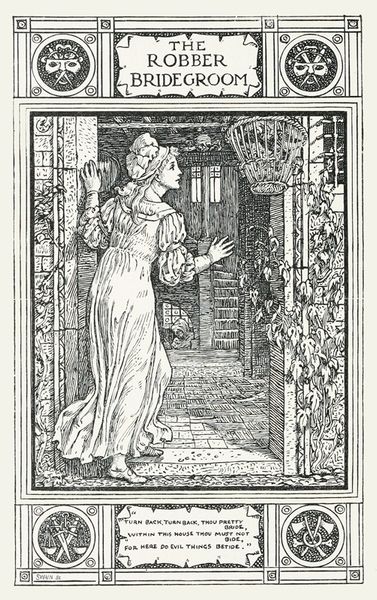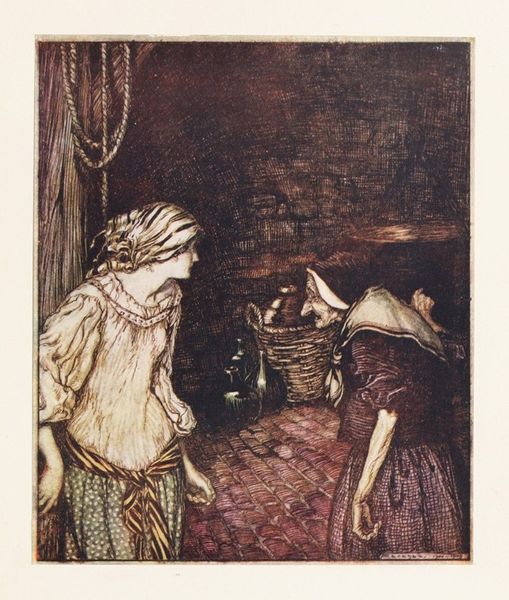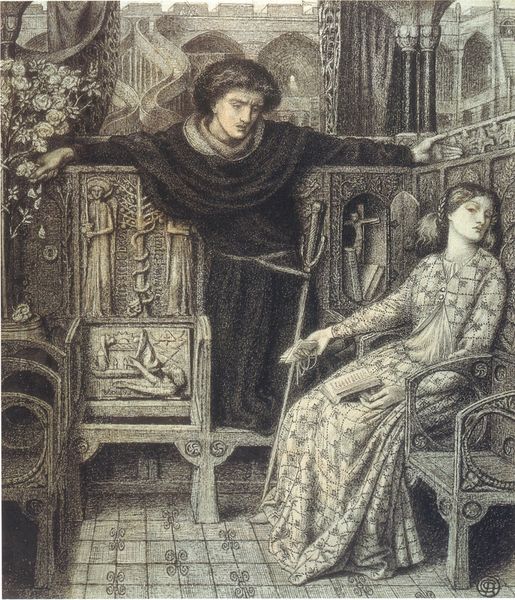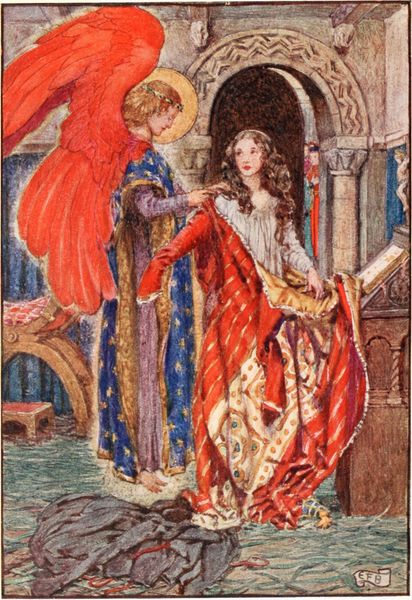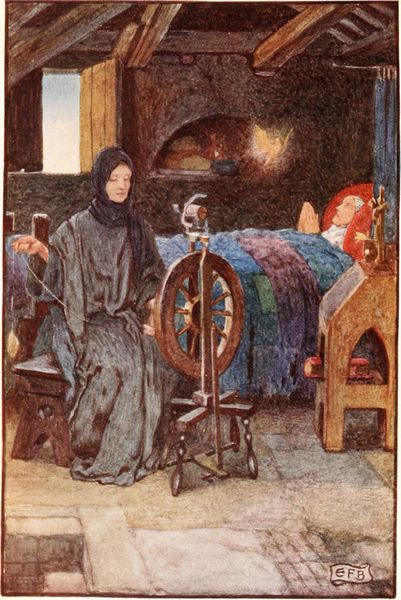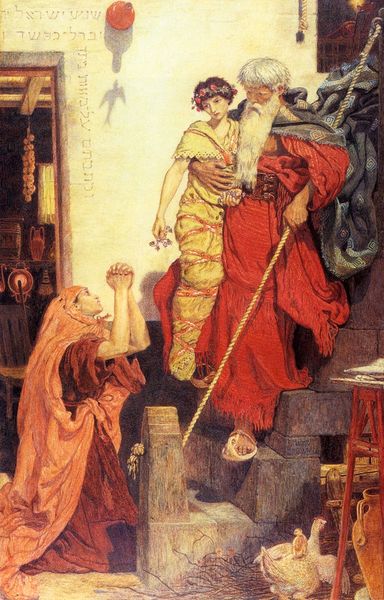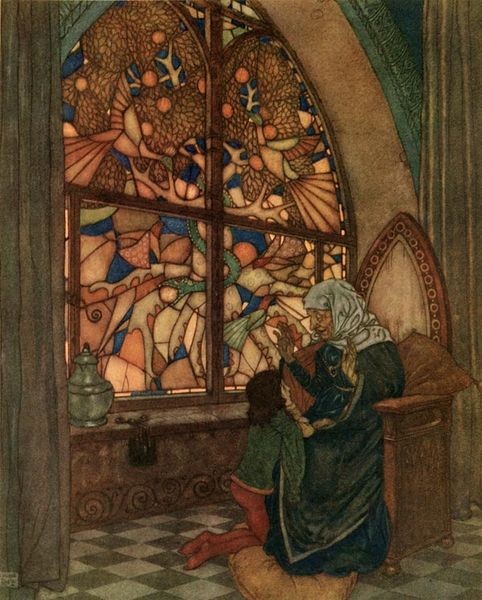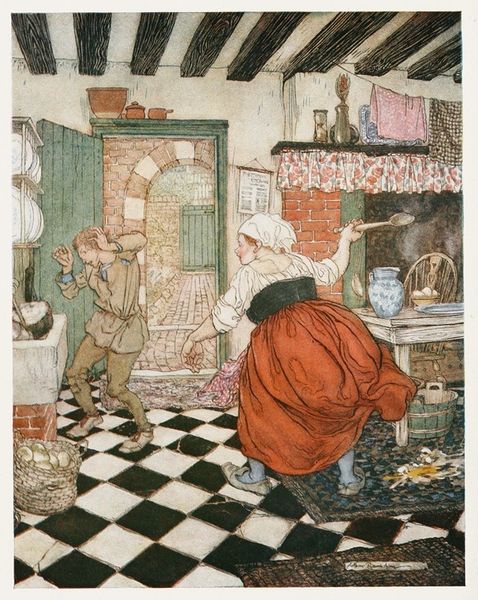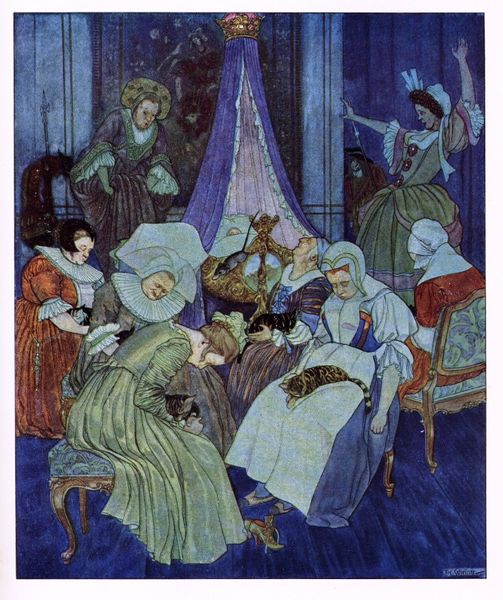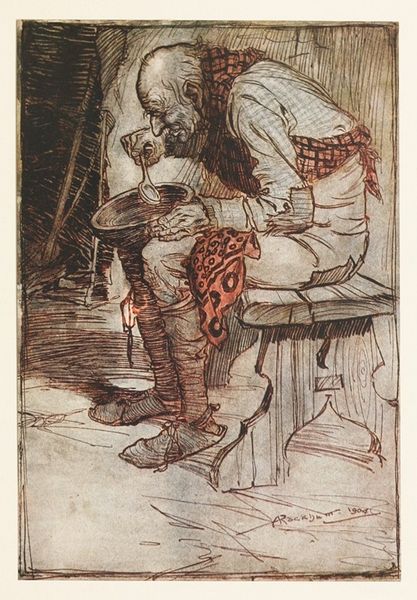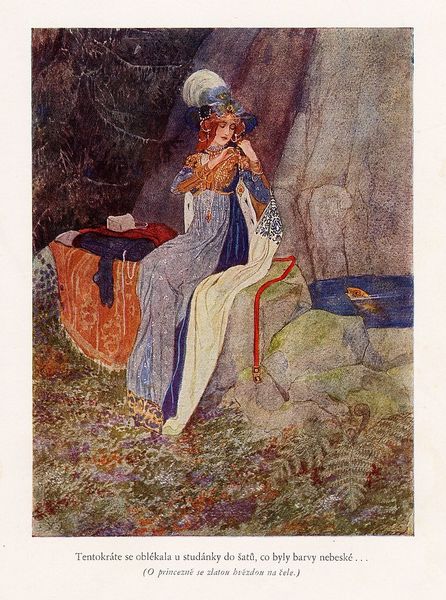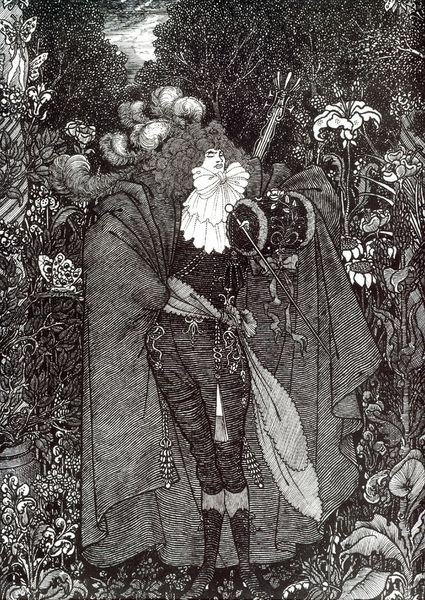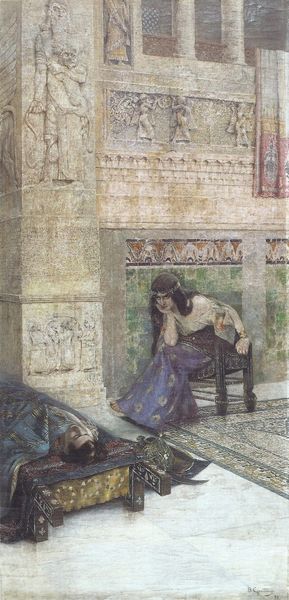
painting, watercolor
#
portrait
#
narrative-art
#
painting
#
oil painting
#
watercolor
#
symbolism
#
history-painting
#
pre-raphaelites
#
academic-art
#
watercolor
Copyright: Public domain
Editor: So this is Eleanor Fortescue-Brickdale’s "Elizabeth Would Steal out and Lay the Child Upon the Altar," painted in 1910, seemingly in watercolor. The subject matter gives it a sort of quiet, somber tone, but I'm immediately drawn to how the architectural details compete with the central figure. How do you interpret this piece, focusing on its formal aspects? Curator: Formally, we must first consider the arrangement of the pictorial elements. Observe how Brickdale has situated the woman kneeling at an altar. The altar's sharp, geometrical form starkly contrasts the fluid drapery of her robes. Notice the use of line and shape to establish a verticality, drawing the eye upwards from the woman to the stained-glass windows and candle above. Do you observe a tension between these hard and soft forms? Editor: I do. The altar is so solid and geometric, almost oppressive, while the figure seems more vulnerable. The folds of her clothing, are these significant texturally or symbolically? Curator: Precisely. These folds not only provide texture but are key to the composition. Note how they create depth and movement. Also, consider the artist's restricted palette of earth tones and muted blues. They function to further the solemn mood of reverence and introspection. Do the colors chosen affect your emotional response? Editor: Yes, the subdued palette does contribute to that feeling. But what of the spatial relationship? It almost seems flattened, doesn't it? Curator: Indeed. The compression of space and careful arrangement of forms invite deeper scrutiny. We aren’t merely observing a scene; rather, we are invited to dissect the interrelationships of color, texture and form. It almost evokes stage design with how the artist carefully creates a set up, highlighting the human condition as the ultimate narrative. Editor: This perspective really clarifies Brickdale's approach for me. I was initially caught up in the narrative, but I now better appreciate her manipulation of formal elements and pictorial arrangements. Curator: Precisely, and as we study it more closely, it seems it has become even more profound. We came to appreciate the composition and artistry even more so.
Comments
No comments
Be the first to comment and join the conversation on the ultimate creative platform.
